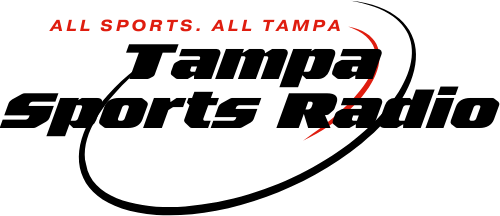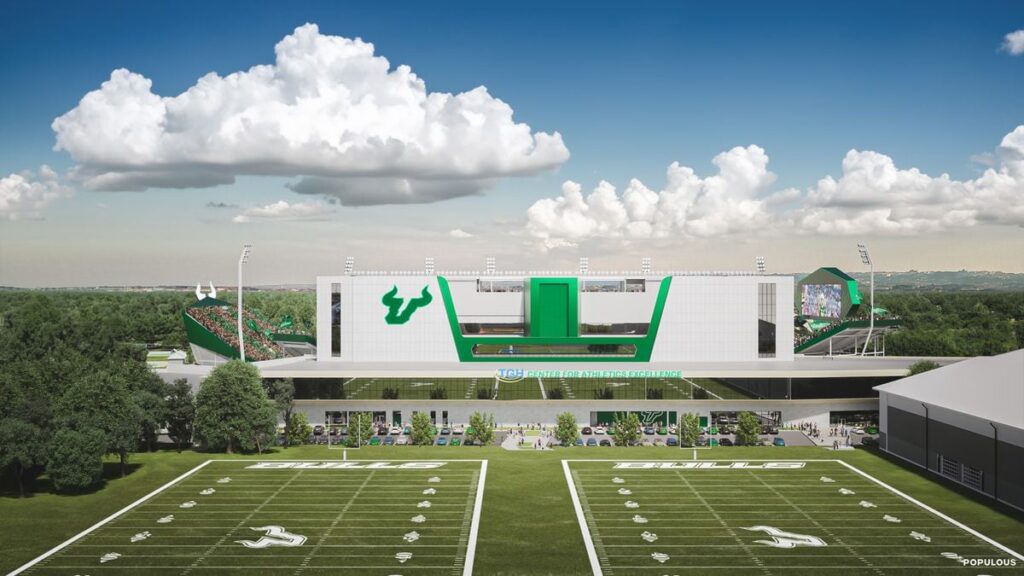There’s a large contradiction enjoying out in main faculty sports activities
Administrators are nervous about cash as they put together to start sharing income with gamers.
“We must make difficult monetary choices at Alabama each single 12 months,” Crimson Tide athletic director Greg Byrne stated. “So if we now have to do this, don’t you assume most all people else does, too?”
Of course. But how, then, will we sq. these monetary issues with the truth that Florida, Florida State, USF, and UCF are collectively pursuing greater than $1 billion on soccer stadium development/renovation?
Why colleges are nervous about cash

The NCAA and main conferences are finalizing a $2.8 billion settlement within the House v. NCAA antitrust lawsuit. To assist pay the invoice, the NCAA payouts to conferences (and, by extension, colleges) will shrink. For American Athletic Conference colleges, the annual hit can be about $500,000, based on preliminary figures from Yahoo! Sports. It’s nearer to $1 million within the ACC, with the SEC someplace within the center.
The House settlement will even let colleges share as much as $22 million with gamers as quickly as subsequent 12 months. That $22 million has to come back from someplace.
“In this point in time, we have to take a look at each greenback we’re spending, ensuring it’s going to the most effective goal potential,” Gators athletic director Scott Stricklin stated throughout final week’s SEC spring conferences.
North Texas and Mississippi have each already determined services upgrades aren’t the appropriate rapid goal.
One argument, as summed up by Arkansas coach Sam Pittman final 12 months: “If you’ve obtained sufficient cash, they’d be comfortable residing in a tent.”
What about services?

Facility updates aren’t simply an merchandise on the expense facet; they’re on the income facet, too. Stricklin stated the Gators’ new baseball stadium makes about seven instances greater than the previous one.
It’s unrealistic to count on income from Ben Hill Griffin Stadium to septuple after a $400 million renovation.
“But may you get shut to 2 instances (extra)?” Stricklin requested. “If you do, all of the sudden you’re paying for that challenge, and also you’re paying for another issues as properly.”
The thought course of is analogous at USF because the Bulls work towards a brand new $340 million on-campus soccer stadium. Athletic director Michael Kelly stated the stadium’s new income streams will assist the Bulls be extra aggressive in every part — together with paying gamers.
“To me, the power’s there,” Kelly stated.
The services arms race has modified

After identify, picture, and likeness (NIL) funds grew to become authorized in 2021, DPR Construction’s Bryan McCaffrey noticed priorities shift. Facilities grew to become much less about wowing recruits and extra about particular person participant and model improvement.
The buildings are nonetheless good. They simply have fewer bells and waterfalls.
“What can I do with rather less as a result of the coed essentially doesn’t want this?” stated McCaffrey, whose portfolio contains Clemson’s soccer facility and present work at Georgia Tech’s Bobby Dodd Stadium.
Instead, the main focus is on paying for issues college students do want. Sports drugs and restoration areas. Room for media coaching. And since extra gamers can afford vehicles or scooters thanks to call, picture, and likeness, extra close by parking.
With stadiums, McCaffrey stated colleges are specializing in enhancing facilities. They’re additionally including banquet areas, LED lights, and different know-how to do greater than host soccer video games. Both methods improve income by larger costs or attendance.
The backside line

USF trustee Oscar Horton appeared shocked athletics wasn’t cited as a income alternative throughout a presentation at Tuesday’s board assembly. If the Bulls may discover a approach into the SEC, he stated, the monetary impression would make a number of the choices being mentioned “appear like pennies.”
Forget concerning the feasibility of an SEC invite and deal with the final line. USF’s price range is $2.6 billion; $20 million in income sharing or stadium debt looks like a rounding error.
If colleges view athletics like Horton — as an funding, not an expense — the continued services push begins to make extra sense, even in an period of income sharing.
“You can see the alignment and the assist from the college,” Kelly stated. “The college can’t do all of it. It’s going to take a village. We’re going to be solely sure by what we will garner from the college and what we will get from our supporters.”
Conclusion
As main faculty sports activities navigate the complexities of income sharing with gamers and the necessity for facility upgrades, the monetary panorama of athletics continues to evolve. Balancing monetary issues with investments in services has grow to be a fragile dance for athletic directors. The shift in the direction of viewing athletics as an funding moderately than an expense underscores the altering priorities in collegiate sports activities administration.
FAQs
1. What is driving the large contradiction in main faculty sports activities?
The contradiction arises from the juxtaposition of monetary issues with substantial investments in stadium development and renovation by main collegiate packages.
2. How are colleges addressing the monetary implications of income sharing with gamers?
Schools are reevaluating their monetary choices, scrutinizing bills, and exploring new income streams to assist income sharing with gamers.
3. How have services upgrades grow to be integral to income technology in collegiate sports activities?
Facilities upgrades not solely improve the game-day expertise for followers but in addition contribute to elevated income by facilities, premium seating, and diversified utilization of stadium areas.


